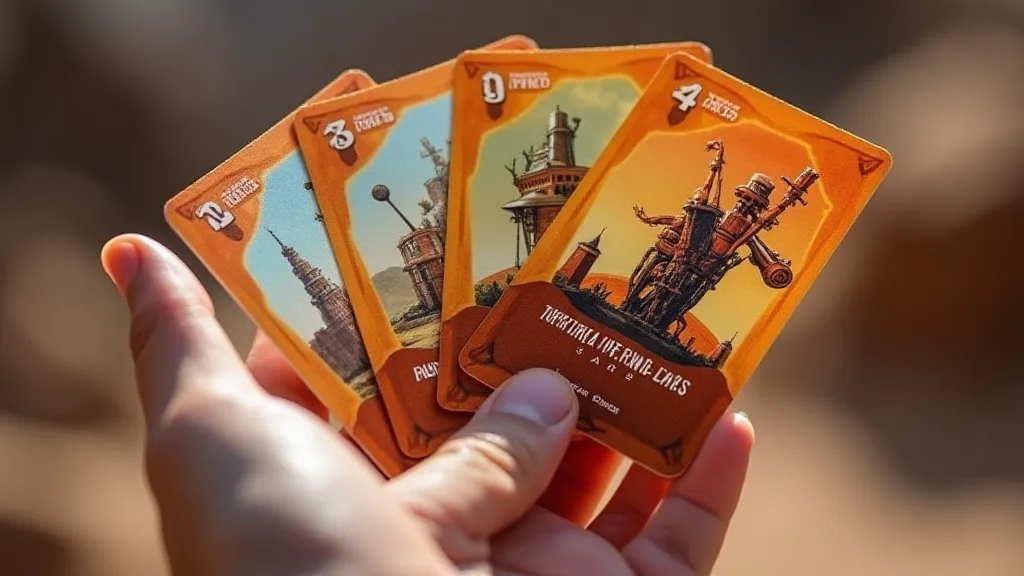Terraforming Mars: A Detailed Guide to Planetary Domination
Terraforming Mars has solidified its place as a modern classic in the board game world, blending engine-building, resource management, and a thematic layer of planetary transformation. This guide aims to break down the complexities of the game, providing detailed strategies for both new players and seasoned veterans looking to refine their approach to Martian colonization. The depth of strategic choice available can be daunting, but understanding the fundamentals is key to becoming a successful planetary architect – much like understanding the value of shared experience in family tabletop games, as explored in The Silent Auction of Shared Experience: A Treatise on Value in Family Tabletop Games.
Understanding the Core Mechanics
At its heart, Terraforming Mars is about raising the global parameters of Mars: Temperature, Oxygen, and Ocean. Each parameter's increase awards Terraforming Rating (TR), which acts as your victory point score, and also provides income each generation. Players achieve this by playing project cards which often require specific resources or conditions to be met. Mastering these mechanics can feel like unlocking a complex system, a similar challenge to anticipating trends in the expanding tabletop cosmos, as discussed in The Dicefall Oracle: Predicting Trends in the Expanding Tabletop Cosmos.
Card Drafting & Project Selection
The initial card draft is crucial. Cards offer a huge variety of actions, from generating resources to boosting TR, and even triggering special abilities. Consider these points when drafting:
- Resource Synergies: Look for cards that benefit from the resources you'll likely produce. Drafting a microbe card is less useful if you rarely acquire plant production.
- Early Game Boosts: Certain cards are more impactful early on, especially those that generate a significant amount of TR or accelerate resource production.
- Late Game Power: Some cards are devastating in the later stages, often requiring specific conditions to be met. Hold these for when those conditions can be fulfilled.
- Corporation Matching: Each corporation has unique starting resources and abilities. Choose cards that complement your corporation's strengths and mitigate its weaknesses.

Engine Building and Resource Production
Building a sustainable resource engine is paramount to success. Early game focuses on establishing basic production of MegaCredits, Steel, Titanium, and Plants. Mid-game involves refining this engine to focus on higher-value resources like Energy and Heat, and optimizing production for TR generation. It’s a process requiring constant assessment and adjustment – not unlike resource management in games like Catan. You can learn more about advanced strategies in Catan Strategy: Resource Management and Trade Secrets.
- MegaCredits: The most versatile resource, used to pay for almost everything.
- Steel & Titanium: Used to build structures, which often offer powerful benefits.
- Plants: Converts to greenery tiles, contributing to oxygen production and TR.
- Energy: Used for many card abilities and can be converted to Heat.
- Heat: Primarily used to increase Temperature.
Cards that improve your resource production are gold. Look for ways to increase the number of production symbols you have or to convert resources efficiently. The constant evolution of the game, and the industry as a whole, keeps things fresh and engaging. Staying updated on Game News: New Board Game Releases & Industry Trends is a great way to remain informed.
Optimizing Your Terraforming Project
Beyond resource generation, consider how your card plays contribute to the overall terraforming effort. Placement is key; blocking your opponents' strategies can be as valuable as advancing your own. This requires careful observation and an understanding of the broader game state, akin to judging the silent auction's value – anticipating what others will do is crucial.
- Tile Placement: Strategic placement of ocean tiles and greenery tiles is crucial for maximizing adjacency bonuses. Consider your opponents' positions and block them if possible.
- Milestones & Awards: Keep a close eye on Milestones and Awards. These can be game-changing if you are able to claim them. Strategize your actions to meet their requirements.
- Opponent Interaction: While Terraforming Mars is primarily an engine-building game, don’t ignore your opponents. Use your actions to hinder their progress where possible, while still advancing your own terraforming efforts. Playing events can be a potent way to disrupt other players.

Advanced Strategies
Once you’re comfortable with the basics, experiment with advanced strategies. Mastering these techniques often involves predicting the next card draw and adapting to unexpected events, a skill further honed through analyzing trends in the tabletop industry.
- VP Cycling: Some cards generate points quickly, but at a cost. Learn when and how to use them to propel your engine forward.
- Draft Manipulation: Try to anticipate what cards your opponents need and draft accordingly. Denying them key cards can severely limit their options.
- Board State Awareness: Constantly assess the board state, considering the placement of tiles, the progress of Milestones and Awards, and the actions of your opponents. This constant reevaluation is vital for success, requiring a keen eye for detail and a grasp of the game's intricate mechanics.
Understanding Corporation Strengths and Weaknesses
Each corporation in Terraforming Mars offers a unique path to victory, with distinct advantages and disadvantages. Selecting a corporation that aligns with your preferred playstyle is critical. Some corporations excel at early-game acceleration, while others thrive on late-game point generation. Recognizing these differences, and adapting your strategy accordingly, elevates your gameplay. The complexities of game design, and the reasoning behind each corporation's abilities, contribute to the overall richness of the experience.
The Importance of Adaptability
Terraforming Mars isn't a game that rewards a rigid, pre-determined strategy. The card draft introduces a significant element of randomness, forcing players to adapt their plans on the fly. A strong player is able to recognize opportunities as they arise, and adjust their approach accordingly. Furthermore, understanding the interplay between different card combinations, and anticipating your opponents' actions, is paramount to achieving victory. This dynamic nature of the game is what keeps it engaging and rewarding, ensuring that each playthrough is unique and unpredictable. Success demands flexibility and a willingness to embrace the unexpected.
Conclusion
Terraforming Mars is a game of strategic depth and rewarding engine-building. By understanding the core mechanics, mastering resource management, and employing advanced strategies, you can take your game to the next level and become the ultimate planetary architect. Remember that even the most seasoned players continue to learn and adapt, embracing the ever-evolving landscape of the tabletop gaming world. Good luck in your terraforming endeavors!






